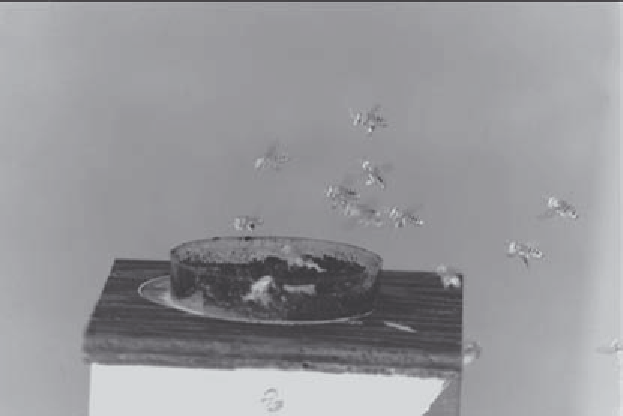Biology Reference
In-Depth Information
forager “decide” how much of each she will collect on an individual
foraging trip? Is she loading according to stimuli associated with nec-
tar collecting, pollen collecting, or both? Adam Siegel asked these
questions as part of his doctoral research in my laboratory at Arizona
State University.
It is very easy to determine the loading of nectar. Artii cial feeders
can be constructed that mimic the shape, color, odor, and rate of de-
livery of l owers. However, it is dii cult to study pollen loading be-
cause we do not have an artii cial l ower that delivers pollen like a
l ower. Instead, to study pollen collection, we take pollen that has
been collected by bees and put it in open dishes. Bees will collect the
pollen in the dishes, but they do so by wallowing in it and then hover-
ing over the dish while they brush the pollen of their bodies and pack
it into their pollen baskets (Figure 9.1). h en they wallow and pack
again and again until their pollen baskets are completely full. I call
them pollen “pigs.” h is is very unnatural. In addition, when we of er
pollen and sugar-solution feeders at the same time in a cage where
bees are restricted to foraging on them, bees normally will collect
Figure 9.1.
Bees collecting pollen from a dish. Photo by Kim Fondrk.

